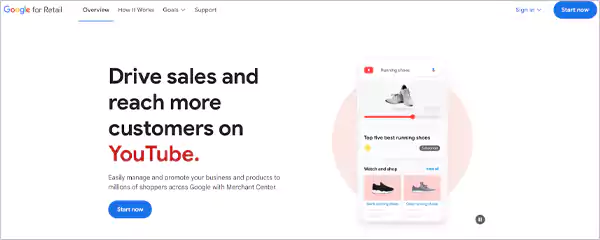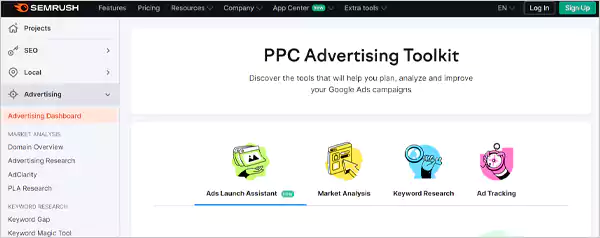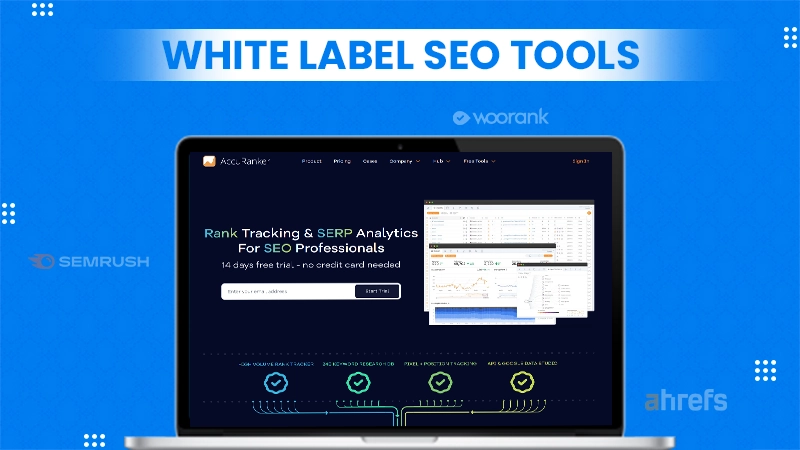In this fiercely competitive world of digital advertising, knowing what your competitors are doing can make all the difference.
By doing Google Ads competitor analysis, you can see what your competitors’ are doing well, where they might be weak, and where there are opportunities for you to improve your campaigns.
But not many of you know how to do it, right? Worry not!
This guide will discuss some of the most effective ways to perform a thorough Google Ads competitor analysis to help you stay ahead and succeed.
So, let’s dive into the details—
There are three possible ways to do Google Ads competitor analysis. They include—
Option 1: Manually Check Google Search Results Pages (SERP)
Manually checking the search engine results pages (SERP) is a straightforward and effective way to understand what ads your competitors are running.
By searching for keywords relevant to your industry, you can see which competitors are bidding on them and analyze the ad copy, landing pages, and offers they present.
So, basically, this way helps you get direct insights into your competitors’ strategies.
Option 2: Use Official Google Tools
Google offers several powerful tools to aid in competitor analysis because they provide direct insights from the source. So, here’s how you can make use of these tools—
Google Ads Keyword Planner

This Google Ads Keyword Planner tool helps you discover new keywords and see how they perform for your competitors. By simply entering keywords related to your industry, you can:
- Identity keywords your competitors are bidding on.
- View search volume data and trends.
- Discover new keyword opportunities that you might have missed.
- Also, get insights into average CPC (Cost-Per-Click) and competition levels.
Using this tool is very simple. All you have to do is:
- Navigate to the tool within your Google Ads account.
- Then, enter your target keywords.
- After that, review the data to understand which keywords are driving traffic and how competitive they are!
Now, this information helps you adjust your keyword strategy to compete effectively.
CPC (Cost-Per-Click) Simulator
The CPC Simulator provides you with insights into the cost dynamics of bidding on specific keywords. To be precise, it allows you to:
- Understand how much your competitors might be paying for their ads.
- Estimate the impact of changing your bids on traffic and costs.
- Make informed decisions about your bidding strategy.
To use it, you need to access the CPC Simulator through your Google Ads account. Then, simply enter different bid amounts for your keywords and see the potential effects on your ad performance.
In short, this tool helps you optimize your bids to stay competitive without spending much or unnecessary money.
Google Merchant Center

This Google Merchant Center tool is particularly useful for e-commerce businesses. It allows you to see your competitors’ product listings and shopping ads. By analyzing this data, you can:
- Understand the pricing strategies of your competitors.
- See how your competitors position their products in shopping ads.
- Identify product titles and descriptions that are performing well.
To use this Google Merchant Center, you need to create an account and submit your product data.
Once set up, you can monitor the performance of your own products. Not only that, you can compare your products with your competitors’ listings.
This comparison helps you optimize your product listing and improve your shopping ad performance.
Google Ads Campaign Target ROAS Simulator
The Target ROAS (Return on Ad Spend) Simulator assists in understanding how changes in your target ROAS can impact your shopping campaigns. It allows you to:
- Determine the optimal ROAS target for your campaigns.
- Set up a different ROAS target and see the potential outcomes.
- Understand how competitors’ ROAS targets might influence their ad strategies.
To try it out, you simply need to go to your Google Ads account and access the Target ROAS Simulator. Then, enter various ROAS targets and review the performance data that are projected.
This helps you set some realistic ROAS goals and adjust your campaign strategies accordingly.
Option 3: Employ Third-Party Tools
If you’re looking for further options, several third-party SEO automation and SEO monitoring tools offer you comprehensive insights into competitors’ Google Ads strategies and provide a broader perspective beyond Google’s own tools. They are as listed—
Ahrefs (Site Explorer)

Ahrefs’ Site Explorer allows you to see your competitors’ paid search traffic and the keywords they bid on. To be specific, with this tool (once you enter your competitor’s URLs), you can:
- Analyze competitors’ PPC performance and identify top-performing keywords.
- View ad copy and landing pages used by your competitors.
- Gain an understanding of your competitors’ backlink profiles and their overall SEO strategies.
So, by offering you detailed reports on paid search traffic, keywords, and ad performance, this tool helps you understand what works for your competitors and how you can also improve your campaigns.
Semrush (PPC Toolkit)

Semrush’s PPC Toolkit provides you with a detailed analysis of your competitors’ PPC campaigns. To make use of it, you just need to enter your competitors’ domains and then, you can:
- Explore your competitors’ keyword strategies and ad copy.
- Estimate their PPC budget and traffic volumes.
- Identify gaps in your own PPC campaigns and discover new opportunities.
In short, this SEO reporting tool kit offers you comprehensive reports on keywords, ad copy, and budget estimates of your competitors, allowing you to refine your own PPC strategies based on it.
Spyfu (PPC Research)

Spyfu’s PPC Research tool offers you a glimpse into your competitors’ PPC campaigns, keyword strategies, and ad history. With it, you can:
- View your competitors’ ad spending and top-performing keywords in both organic search and AdWords.
- Discover new keywords and ad opportunities based on competitor performance.
- Analyze their historical ad data to see long-term trends and strategies.
To try this easy-to-use tool, you need to enter your competitors’ domains and then, you can review the detailed reports on their PPC activities. These reports provide you with valuable data related to your competitors’ ad spending, keyword performance, and historical trends to help you optimize your own PPC campaigns.
So, by using both Google’s tools and third-party software or either of them, you can gain a deep understanding of your competitors’ Google Ad strategies. Once you have that understanding, you can easily identify successful tactics, refine your campaigns, and achieve better results in this competitive digital advertising world.
Bonus Option: If you want and have the technical expertise, you can also build your own monitoring tool to automatically gather data on your competitors’ keywords, ad placements, and performance metrics.
What Are the Common Mistakes to Avoid During Google Ads Competitor Analysis?
Some common mistakes to avoid during Google Ads competitor analysis include—
- Focusing only on top competitors: Only looking at your biggest competitors may cause you to miss out on valuable information from other, emerging competitors.
- Neglecting to analyze ad copy and landing pages: If you keep ignoring your competitors’ ads and landing pages, you lack understanding of what messages and offers work well with your target audience.
- Overlooking your emerging competitors: You never know when your new competitors will become a serious threat to you if you keep ignoring them.
- Failing to adapt or change your strategies based on analysis findings: This can prevent you from improving your campaigns and remaining competitive against others.
So, make sure you avoid these mistakes for an effective Google Ads strategy to stay ahead of your competitors.
Wrapping Up
That’s all! By manually checking SERPs, using Google’s tools leveraging third-party software, or even by building your monitoring tool, you can do Google Ads competitor analysis. It is crucial to stay ahead in the digital marketing field.
These above-discussed options help you gain valuable insights into your competitors’ strategies and empower you to refine your campaigns, improve performance, and ultimately achieve better results in your advertising efforts.
How to see competitors in Google Ads?
Although you can’t directly see your competitors’ spending or the specific keywords they bid on in Google Ads, you can still gain useful information about their ad performance. Using the Auction Insights Report, found under Campaigns and Ad Groups, you’ll be able to compare your ads against your competitors’ ads.
How to analyze Google Ads of competitors?
You can use tools like Semrush, Ahrefs, or SpyFu to gather data on competitors’ ads. Looking at their keywords, ad copy, and landing pages helps you understand their strategies and performance.
How do I research my competitors’ ads?
With the help of ad intelligence tools like AdBeat, Semrush, or Moat, you can see your competitors’ ad creatives, their placement, and their performance. These tools help you analyze their ad copy, images, and targets to gain insights into their strategy.
How can I identify the keywords my competitors are bidding on?
To identify the keywords that your competitors are bidding on, consider tools like Google Ads Keyword Planner, and Ahrefs’s Keyword Explorer. They provide you with valuable data regarding keywords that drive traffic to your competitors’ ads.
What metrics should you focus on while analyzing competitors’ Google Ads?
The key metrics you should focus on while analyzing competitors’ Google Ads include competitors’ ad copy, keyword usage, CPC (Cost-Per-Click), ad placements, landing page quality, and overall ad performance. These metrics help you understand what works for your competitors and how you can improve your own campaigns.
Can I use competitor’s strategies to improve my own Google Ads performance?
Yes, analyzing your competitors’ strategies can help you identify successful tactics that they have used. You can then make use of this valuable information to refine your own campaigns and improve your ad performance to gain a competitive edge.
How often should I conduct Google Ads competitor analysis?
Since this industry is highly competitive, it is best to conduct competitors’ analyses regularly to stay updated on your competitors’ strategies and market trends.












